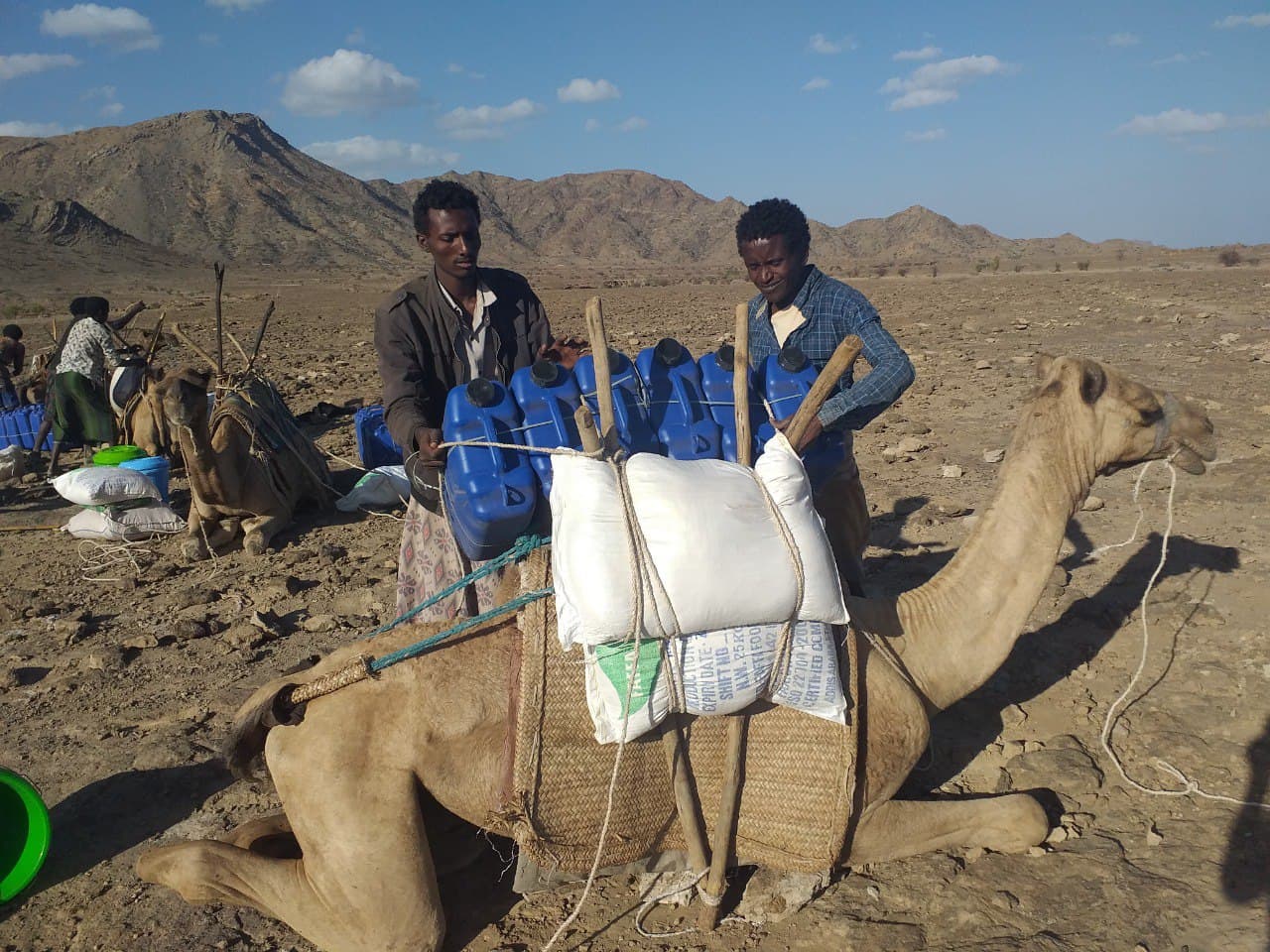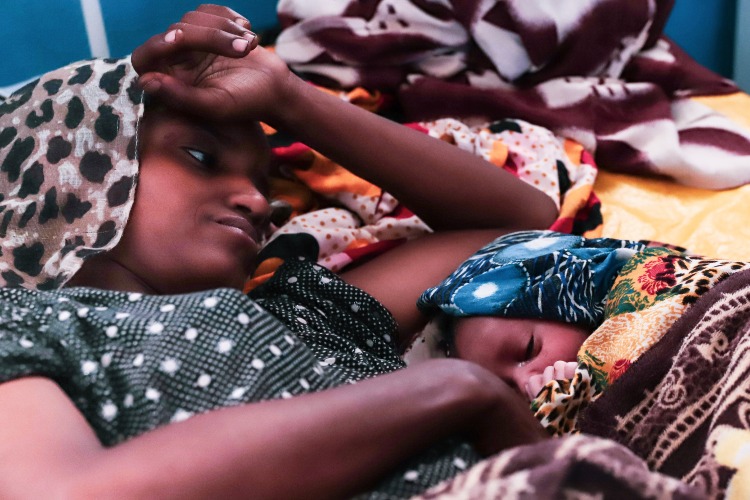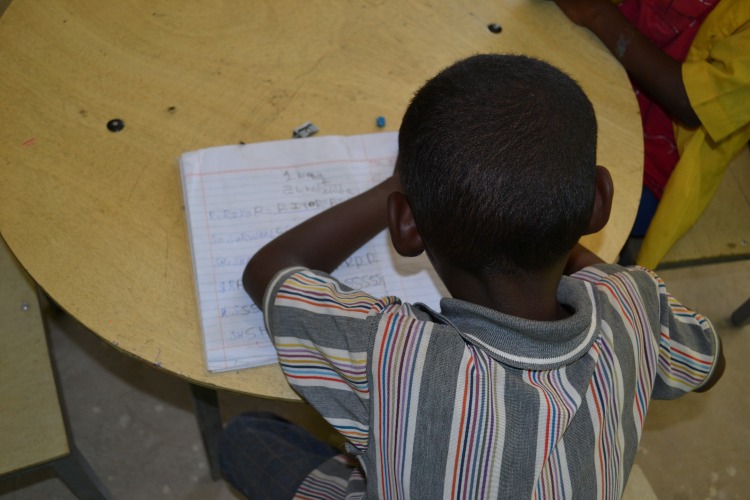Field Update: Terrifying displacement & malnutrition in Afar, April 2022
4 April 2022

It’s been 18 months since civil conflict broke out in northern Ethiopia. Now, flare-ups of violence in the Afar region have displaced 300,000 people and pushed many more to the brink of famine.
Fast update
- Originating in the northern Tigray region in November 2020, violence spread to neighbouring Afar in July last year before flaring up again in January this year.
- Armed Tigrayan forces now hold six of the 32 counties in Afar. Local Afar communities have experienced heavy gunfire, aerial attacks and the looting or destruction of homes, health facilities and infrastructure.
- It is estimated that 300,000 Afar people have had to flee their homes, most only able to take whatever they can carry on their backs.

Above: People from Konnaba, Afar fleeing their homes, carrying what belongings they can on their backs.
“How much longer can these people bear this?”
Our project partner in Afar, Valerie Browning (Co-Founder & Program Director of the Afar Pastoralist Development Association) is dismayed at the ongoing conflict and the lack of reporting by Western media.
"This is to update you and hopefully enlighten you as to what is happening," she says. "Our concern is that the world cannot hear the Afar. We (APDA) really want to communicate with any person or organisation wanting and able to assist."
"Five* regions on the border with Tigray are now under attack. Over 300,000 northern Afar are living under trees, herded by the terrifying sound of artillery."
"In the last two months, a total of 53 women delivered babies under trees. Many have had to move on up to 6 times already."
"Below is a video showing the displacement of people from Konnaba in north-western Afar. I was blown away to see this huge exodus from the ensuing conflict. How much longer can these people bear this?"
*An article by Reuters (2 April 2022) writes that Tigray forces now hold six counties of Afar.
A story from the field
Kadiga, 32 years old and a mother of five, has experienced first-hand the terrifying consequences of this conflict.
She and her family were forced to flee their home when missiles began to fall on her hometown of Aba’ala in December last year. Along with her mother and a neighbouring woman, they grabbed what food and supplies they could, then fled on foot for three days into the rural outskirts of her region. There, they constructed a temporary shelter from traditional palm leaves and tried to source food from the local area.
Not even two months later, rockets began falling again, this time hitting their temporary house. Kadiga says no one was inside at the time but all their remaining belongings were burnt. Terrified, the small group fled once more.
By this time, Kadiga was nine months pregnant. After four days of walking, she started to experience labour pains. Her mother and neighbour urged her to keep walking – there was no hope of help until they reached Hasuuma, where the nearest camp for displaced persons was located. So Kadiga kept walking for two days as the pain got worse, until finally she could take no more.
Collapsing under a tree, a passing woman – a stranger – said she had some knowledge of childbirth and could help. Thankfully, Kadiga’s child was born alive. Yet instead of resting, the exhausted mother was urged back on her feet to continue the walk to Hasuuma – and safety.
Thankfully, the group passed other displaced Afar who shared what little food and supplies they had. Nine days later, Kadiga reached Hasuuma where she and her family found space in a makeshift camp for internally displaced people. She is thankful to be here, in safety, when so many others were unable to make the journey. But she hopes desperately for the day peace is restored and she is able to return home.

Above: Kadiga holds her newborn son after their nine-day trek to Hasuuma.
Health workers are overwhelmed
Project partner Valerie Browning talks about the difficulty in providing emergency aid when many camps of displaced people have fled to some of the most remote areas of Afar.
"There is extreme widespread malnutrition across Afar, especially in remote districts of Gala’alu and Awra," she says. "This requires APDA's health workers to take on extraordinary effort to find the malnourished in remote places and treat them."
"People are in extremely weak condition and the numbers are growing rapidly. There are at least five areas APDA can only reach via camel and foot. We are trying to send food that needs no cooking because many have no cooking utensils or pots. "
"So much infrastructure has been destroyed too; water reservoirs, clinics, schools, people's homes. Many vehicles, too, have been lost in this fighting - including two of APDA's trucks which were needed to help deliver emergency supplies."
Since the fighting spread to Afar in July last year, APDA have been working to provide:
- Immediate food supplies that require no cooking
- Supplementary food for severely malnourished people, with a priority for pregnant & breastfeeding women
- Health teams that can walk alongside the displaced to provide treatment, prevent outbreaks of disease and screen for malnutrition
- Hygiene materials including soap, jerrycans and water purification tablets
- Cooking pots & blankets
- Water trucking for areas accessible via truck
- Dry palm leaf mats to construct traditional shelters
With a staggering 85% of Afar people currently dependent on food relief, APDA is also working to stabilise and activate the local goat and livestock markets to help with long-term food security.
"APDA is overwhelmed with the need to rescue people from hunger and disease, while still implementing our regular program activities for long-term development, so that the communities have hope in their hands and something to build on. We try to keep going and move on. Development cannot stop."
To help APDA continue their emergency relief efforts in Afar, click here >

Above: APDA team loading up camels to deliver emergency supplies to remote areas inaccessible via truck.
Extra resources
Read more about the conflict in Afar >
New front in Ethiopian war displaces thousands, hits hopes of peace talks
2 April 2022
A new front in Ethiopia's war in the Afar region is imperilling efforts to get enemies to sit down to peace talks, three regional officials and three diplomats said, and a ceasefire declared last week may have been breached in some places.
The flare-up of violence in Afar this year came after fighting in the neighbouring regions of Tigray and Amhara had ground to a stalemate and as moves were gathering pace to get the government in Addis Ababa and Tigrayan rebels to agree to peace negotiations.
"There cannot be peace in Ethiopia while there is fighting in Afar," said Mussa Ibrahim, a clan leader in Erepti, one of six districts in Afar currently occupied by Tigrayan forces.
Read the full article from Reuters here >




